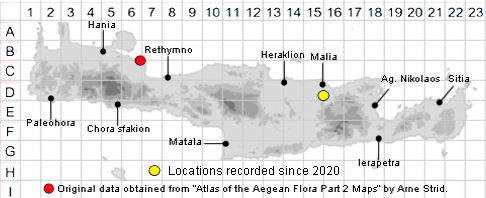
SPECIES DESCRIPTION
POLYGONUM AVICULARE subsp. RURIVAGUM
Family and Genus:- See- POLYGONACEAE/Sect. POLYGONUM/P.
Common Names:- Knotgrass
Homotypic Synonyms:- Polygonum angustum
Meaning:- Polygonum (Gr) Many joints, a name used by the Greek physician and
botanist Dioscorides a possible reference to the many nodes.
Aviculare (L) Of small birds, eaten by small birds
Rurivagum (L) Of country roads, country wandering.
General description:- Low, prostrate or sprawling perennial with a woody stock.
Leaves:-
1) Alternate, 15-50 x 5-18 mm, simple, oval, elliptic or lance-shaped, entire, hairy,
plain.
2) Ochreae, brownish, jagged at the top, in the middle part of the stem 8 - 12 mm
with several persistent veins, amplexicaul.
Flowers:-
1) 1-2 mm diam., almost sessile, joined together in long clusters by 1-4 at the axil
of the leaves. white or pink, with green marks
2) Perianth, with 5 partly fused tepals.
4) Stamens, often 8 with a white filament and yellow anther.
5) Styles, 3.
Fruit:-
1) Nutlet, 2·5-3·5 mm. , enclosed in perianth, ± flattened with the shortest side
concave. without wings, blackish, dull.
Key features:-
1) Larger leaves, usually 5-20 mm wide, lanceolate to ovate.
2) Perianth-segments, broad, overlapping.
3) Petiole, included in the ochrea.
4) Nutlet, 2·5-3·5 mm.
5) Ochreae, brownish, jagged at the top, in the middle part of the stem 8 - 12 mm
with several persistent veins, stem clasping.
Habitat:- Cultivate land, ruderal habitats, vernal pools, trampled ground, dolines. 0-
1600 m.
Distribution:- Throughout Greece. Probably native to Europe, but now an almost
cosmopolitan weed. Somewhat limited distribution across Crete, but probably under
recorded.
Flowering time:- Mainly (Apr-)June-Oct.
Photos by:- Marinos Gogolos
